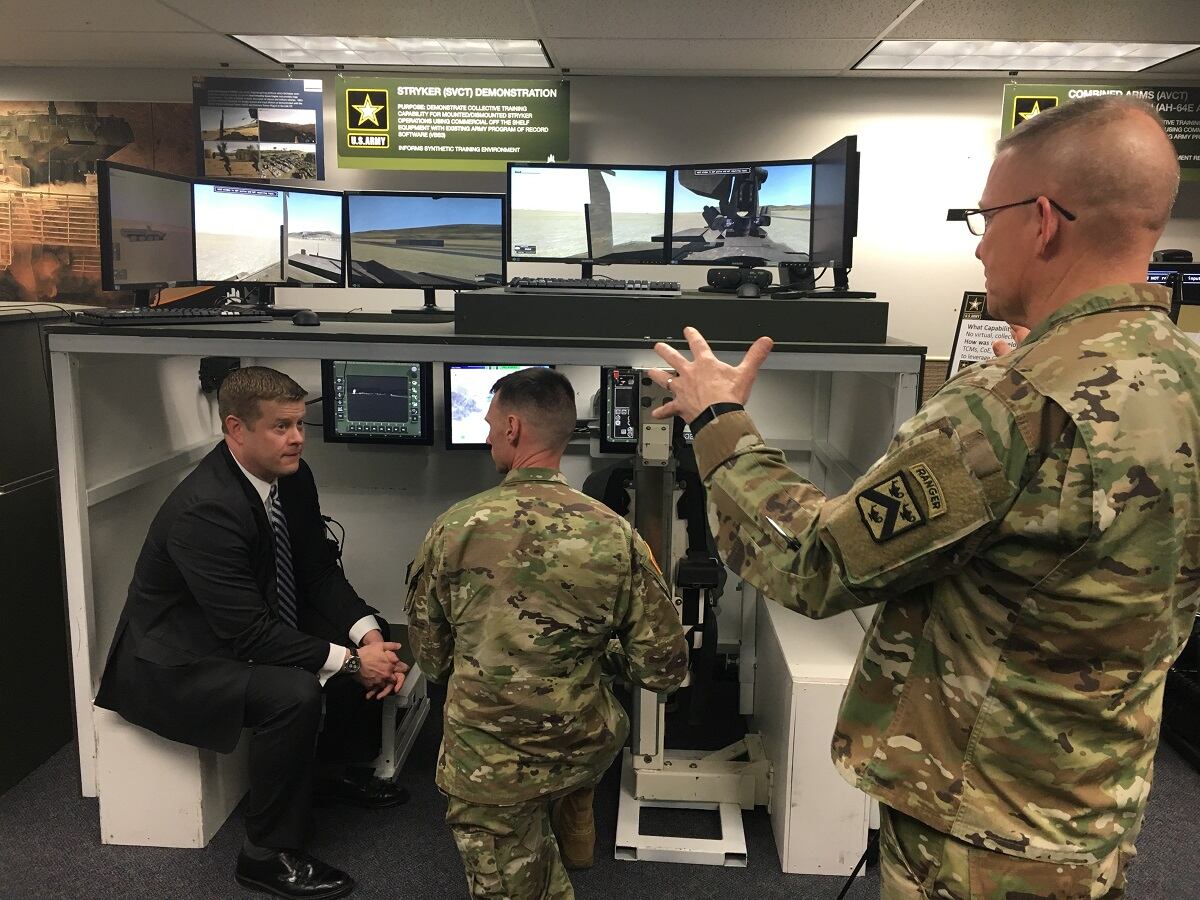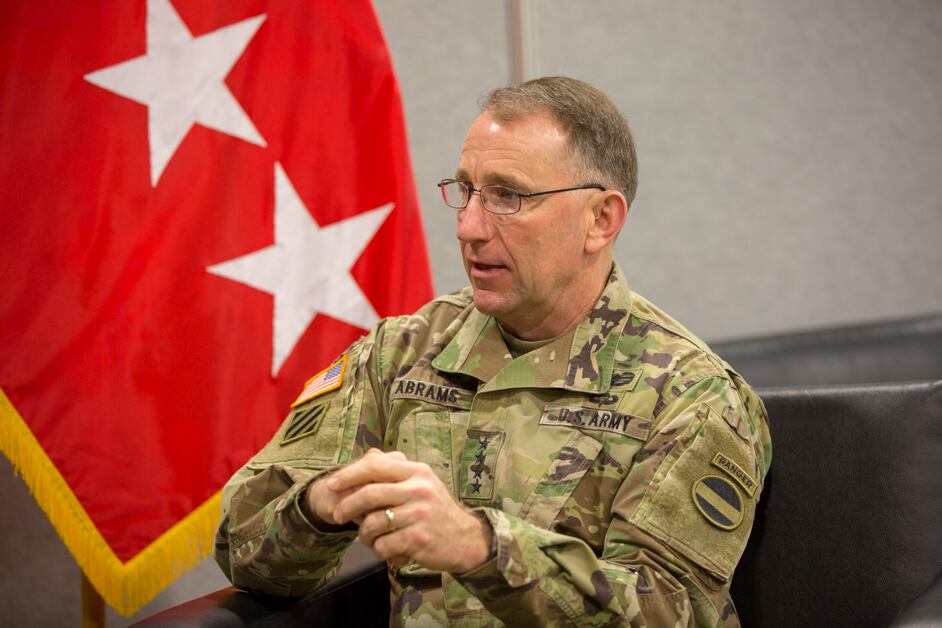WASHINGTON — The U.S. military is working at lightning speed to ensure training aligns with the growing complexity of today’s operational environments. The synthetic and virtual training improvements will help to rapidly shape future capabilities and benefit joint operations with allies against peer adversaries.
Complex synthetic training environments will allow the services to gain the repetition they need to be proficient across the spectrum of conflict, according to Maj. Gen. Maria Gervais, the deputy commanding general for the U.S. Army’s Combined Arms Center-Training.
“We see this capability as a capability that allows you to fight, rehearse and train with the same equipment” in large scale combat on relevant terrain, Gervais said Sept. 5 at the Defense News Conference. “Because the secretary of defense would like to have 25 bloodless battles before the first battle.”
But synthetic training is poised to be much more than that.
The Army has prioritized the development of its Synthetic Training Environment — or the STE — to create more realistic and complex training environments that better reflect the operations the service will likely see in the future as it faces off against adversaries with weapons systems comparable to the U.S. military’s capability in often-denied environments.
RELATED

As the STE advances, future weapon systems will also be incorporated into training, which both prepares war fighters to use that equipment, and aids technology developers and requirements writers get those weapons systems right before fielding mass quantities, Gervais explained.
The Army is currently using training in exercises to advance electronic warfare capabilities, Gervais noted.
The STE under development through one of eight cross-functional teams set up to prioritize the Army’s top modernization efforts, such as Long Range Precision Fires, Next-Generation Combat Vehicle and Future Vertical Lift.
“The STE is actually one of the eight CFTs from the Army, and it’s cross-functional because we see the utility of this training environment being used” across the other modernization efforts, she said. “We see it as the ability to train on those systems and hone the skills before the systems are actually fielded, and so we are looking at all the other opportunities that this training environment could be used for.”
RELATED

Gervais said that with technological integration into the STE, such as machine learning, the Army is seeing “the tip of the iceberg on eventually what we could do with some of this technology that is out there.”
But simulation is also allowing the services to increase the size and scope of training, which used to be performed at large, live rotations and exercises abroad.
“We never want one of our service men and women to do something in combat they haven’t done in training,” Lt. Gen. Mark Kelly, the deputy chief of staff of U.S. Air Force operations, said at the conference. “I would say we really don’t want to commit the investment and resources to do the training live until they have done it in a simulator.”
So the Air Force is looking to see if it can conduct entirely virtual large, live exercises.
“Do you do a ... virtual flag where ... you have units dial in, if you would, from distributed locations around the world to do a Red Flag-size, large-force deployment with 100 percent simulators? Do you do that 50 times? Or do you do that five times, then go fly?” Kelly said. “It depends on what the challenge is out there.”
The services are also grappling with how to seamlessly tie together simulators and synthetic training capabilities across the services, as well as with ally and partner systems, to create a more realistic fighting environment for training.
Marine Lt. Gen. H. Stacy Clardy, the military deputy to the Office of the Under Secretary of Defense for Personnel and Readiness, said a major factor in exercises is “how we train with our partners.”
The services “have to make sure that we can train and fight with our partners and allies," she said. "So any type of training we do has to take that into account, so any simulation we do or any live training has to be able to incorporate our partners.”
Gervais said the Army just completed a large, constructive exercise with one of its partner nations. “I will tell you that 12 months prior to that and the intense energy that had to go in so that we could link everything together was just unbelievable," she said. "And so what we have to do is figure out how do we simplify that process, think about interoperability from the start, so that we have open architecture and we can come together seamlessly versus spending 12 months trying to make everything work.”
While the exercise did come together successfully, she said, “it should not take that much energy because we don’t have that time and it’s not just our partners — it’s between the services too.”
Jen Judson is an award-winning journalist covering land warfare for Defense News. She has also worked for Politico and Inside Defense. She holds a Master of Science degree in journalism from Boston University and a Bachelor of Arts degree from Kenyon College.







